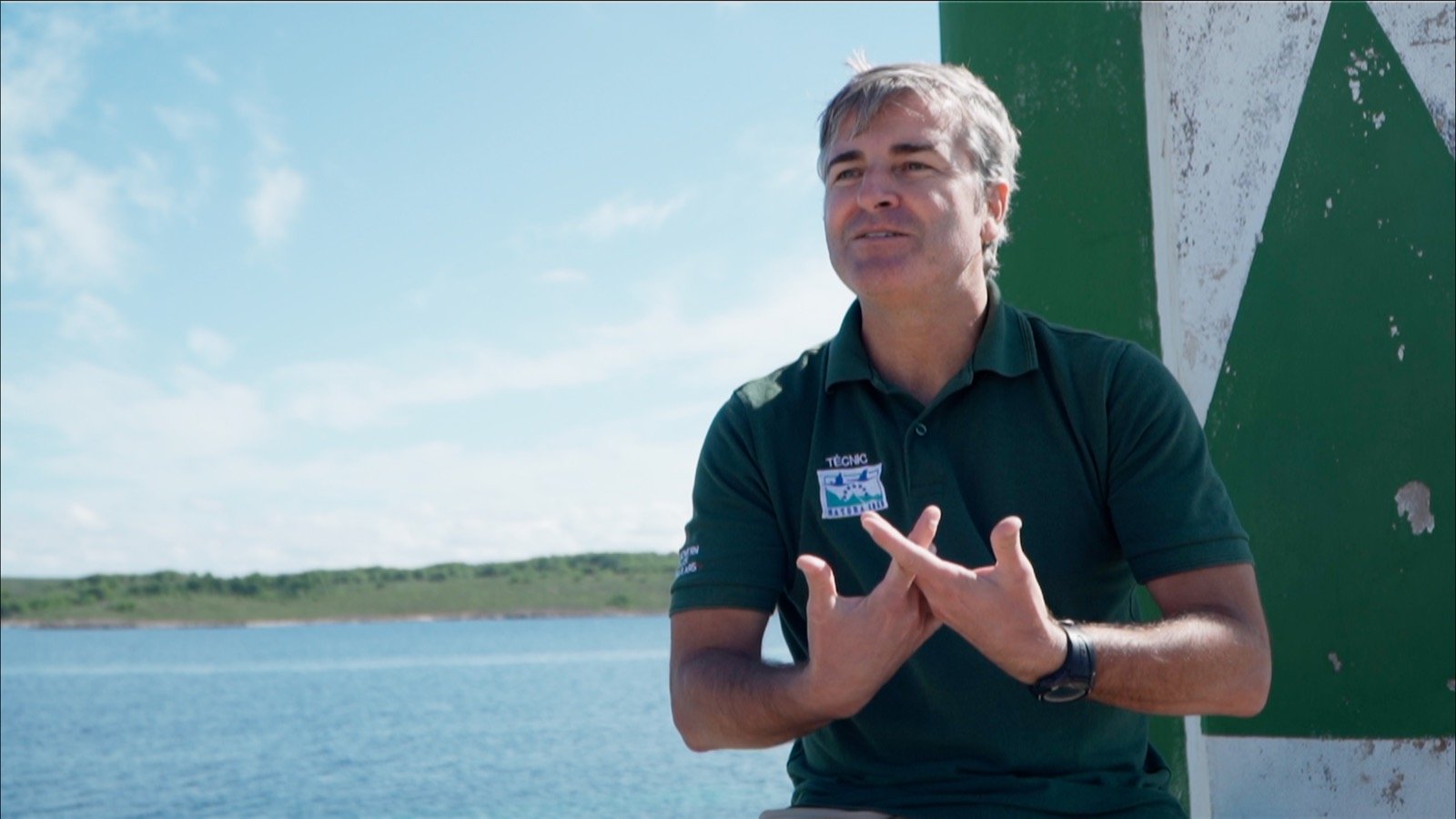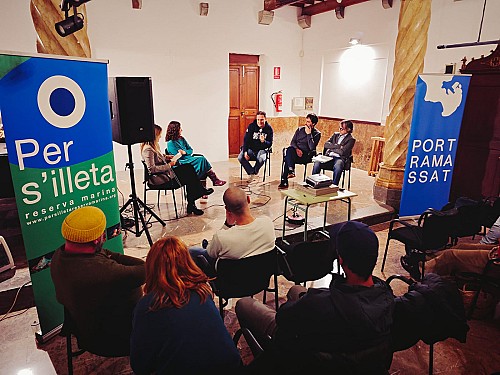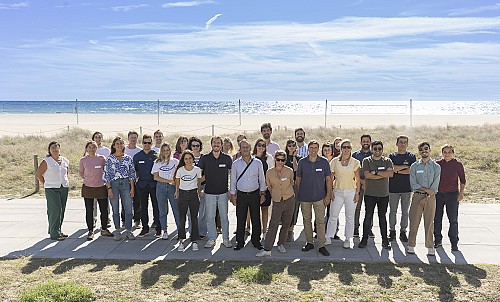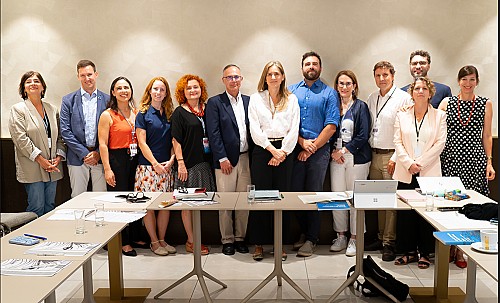Ricard Borràs Tejedor has a degree in Marine Sciences and Environmental Sciences. He has worked for the Socio-Environmental Observatory of Menorca (OBSAM) as an intern; in the protected natural areas of the Pitiusas as an environmental educator; in the Maó Town Council as an environmental technician; in the s'Albufera des Grau Natural Park as a conservation technician; and for almost 10 years he has been working for the Natural Environment Planning Service in the management of the Natura 2000 Network Areas of autonomous competence declared in Menorca.
What does your work consist of?
I assess all plans, projects, or activities, public and private, that are to be carried out in protected Natura 2000 Network areas, both marine and terrestrial. The aim is to analyse whether the actions included in these plans, projects, or activities could negatively affect the species or habitats of community interest in these areas. Another of the fundamental tasks carried out by the service is the preparation, revision, and processing of the Natura 2000 management plans for the different Natura 2000 Network Areas, a very complex and demanding task to which we cannot dedicate as much time as we would like, and which is really necessary. At the same time, we try to promote the implementation of some of the projects or actions included in the management plans, such as the signposting of Natura 2000 sites.
Why is it so important to have more marine protected areas (MPAs) with more effective management?
The sea is a source of invaluable resources, but to ensure their value it is essential to maintain seas and oceans in the best possible state of conservation, and it has been scientifically proven that MPAs are the best tool to achieve this goal.
MPAs ensures the conservation of habitats and species that are key to the functioning of the entire marine ecosystem. We must remember that if we have a sea in a good state of conservation, it will offer us a multitude of ecosystem services that are the basis of our health and also of our economy. Moreover, in well-managed MPAs, these ecosystem services act synergistically, and therefore enhance each other.
How do you think we can achieve the target of 30% of the sea protected by 2030, and 10% highly protected?
At the Balearic level, achieving the 30x30 target is relatively straightforward. We are in a good position in terms of the percentage of the Balearic Sea protected; now we have to manage these MPAs effectively. To do this we have to approve the management plans of the LIC and ZEPA under state jurisdiction. We need to ensure that they incorporate a regulation of uses and activities consistent with the values they are intended to protect and, more importantly, that they have effective and sufficient monitoring associated with them. The regional administration must also do its homework and finish approving the Natura 2000 marine management plans that are still pending approval and substantially improve those approved in 2007. It is also necessary to regulate fishing within all declared MPAs in a differentiated manner with respect to non-protected marine areas.
With regard to the 10% no-take zone objective, I am much more pessimistic. These zones are extremely important from the point of view of the integral conservation of the entire marine ecosystem and in them we can observe the sea in its pure state without human exploitation. Moreover, they are a source of exportation of living resources (adult fish, fry, eggs, larvae) to other areas of the sea that are not protected or not so strictly protected. However, in the Balearic Islands, recreational fishing and also professional fishing with small-scale fishing gear are deeply rooted in the territory and nobody wants a no-take zone in front of their house. Moreover, the trend in these areas in the Balearic Islands seems to be changing. Recent modifications to the regulations of the Balearic marine reserves allow, albeit to a very limited extent, a certain degree of fishing exploitation, as in the case of the special diving areas of the Toro and Maltreats Marine Reserves and Isla del Aire, or Area B of the Northern Marine Reserve of Menorca. This leads us to believe that fewer and fewer no-take zones will be approved in the strict sense of the word. A great deal of public and sectoral education work is needed to improve the degree of acceptance of these no-take areas, as well as the political will to declare them and not back out, as has been the case with the Isla del Aire Marine Reserve. We must remember that the percentage of no-take areas in the Balearic Islands is tiny, much less than 1% of the territorial waters, and if we only consider no-take areas in the strict sense, the percentage is even more ridiculous.
What do you think marine citizen science can contribute to the administration?
Citizen science is a fundamental tool for obtaining very valuable information on our marine ecosystems. It allows us to detect the presence of species in areas that had never been detected before, to establish patterns of species mobility between different geographical areas, and even patterns of mobility of specific individuals of some species, such as grouper. It makes it possible to complete the lists of species that inhabit a given MPA and which can then be the object of conservation measures. In short, the information provided by citizen science – once it has been scientifically validated – serves as a basis for drawing up MPA management instruments.
How would you rate the current level of marine protection in Menorca?
I'd give it a pass mark. Certainly, we have many MPAs painted on the map, but their effectiveness is very low. We have a flagrant lack of surveillance resources, both in the marine reserves and in the rest of the MPAs. Furthermore, a large proportion of these mapped MPAs are not effectively managed. In fact, they don’t even have approved management instruments. In practice, this translates into MPAs where the activities carried out inside are exactly the same and with the same intensity as those carried out outside, and this obviously has no effect on the recovery of marine resources and biodiversity. On the other hand, despite the efforts to protect Posidonia and Cymodocea nodosa algae that have been made by the administration in recent years, the reality is that there is still a significant percentage of vessels anchoring above these valuable habitats.

Ricard Borràs surfing in the Northern Marine Reserve of Menorca. Photo: Ricard Borràs.
How did your bond with the sea begin?
It is true that from a very young age I have always been linked to the sea, but basically the link was born by going swimming, fishing, and sailing with my parents, and when I grew up, practising my favourite sport: surfing.
Quick quiz for sea lovers
A book: Observando el tiempo [Watching the time], by Alfred Rodriguez Picó.
An image that reminds you of the Balearic Islands: Es Vedrà.
A marine species: Cormorant.
A person or organisation of reference: Kike Ballesteros, from CSIC-Blanes.
A beach: Punta Prima.
Optimistic, realistic, or pessimistic? Realistic.





